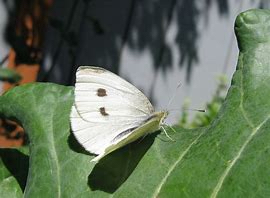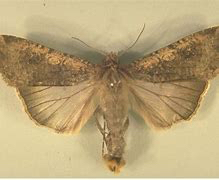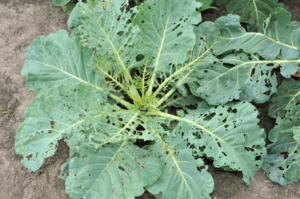The Problem
- The larvae of cabbage moths, loopers, etc. eat up to three times their body weight in plant material each day. The holes they chew render the plants unsightly, unhealthy and generally inedible. This is most likely how you will notice them on your plants.
-
Older caterpillars may keep feeding on leaves or tunnel into heads. They do a lot of damage, but it doesn’t show up as readily.


Identification
- Appearance: The damage to vegetable crops is done by the larvae generally small, green “worms” — crawling along and munching on foliage.


-
- There are various forms of the adult moth; some brown and fuzzier-looking, others the pretty little white or yellow butterflies that we would otherwise enjoy seeing around a garden.




- Signs of damage: Loopers and cabbage moth damage shows up either in the form of leaves with holes larger than those of a flea beetle, or holes bored into cabbage and broccoli heads.


- They can also be detected by the unsightly black droppings (“frass”) they leave behind.
Controls
- Distinguishing between the larvae of one type of moth or another isn’t very important. The same pest control methods work on all of them. (And in fact, these control methods are the same as listed for cabbage caterpillars.)
- Understanding their life cycle is an important step in controlling them.
- Pupae spend winter attached to host plants or in nearby garden debris.
- Moths emerge in the spring, mate and deposit pale green, domed eggs on the plants.
- The eggs hatch in 3 or 4 days.
- The destructive larval stage reaches full development in 2-4 weeks.
- After gorging themselves on your crops, they spin thin silk cocoons attached to the stems or undersides of leaves, and pupate for about 10 days.
- At that point, another generation of adults emerge to start the process all over again.
- Logically, the first step in control is to clean up all plant debris — especially cole crops — so the pupae have no place to spend the winter.
- Covering plants with row covers will keep the adult moths from laying eggs on your crops in the first place.
- Garlic, as a companion plant to members of the Brassica family, will deter many insect pests notably Cabbage Loopers.
- The natural, soil dwelling bacterium Bacillus thuringiensis or Bt-kurstaki is particularly effective on larvae of all types.
- Larvae are easy, visible targets for predators. Take advantage of its many natural enemies by encouraging birds and beneficial insects (trichogramma wasps are the looper larvae’s biggest enemy) to your garden.
- Certain herbs, including parsley, dill, fennel, coriander and sweet alyssum, attract the kinds of insects and other creatures that prey on worms.
- Come to that, since they are so visible you can also pick them off with your fingers.
- There are organic sprays that may be used, but these are wide-spectrum sprays and eliminate beneficial insects as well as harmful ones.
